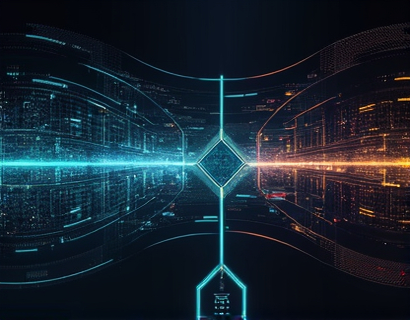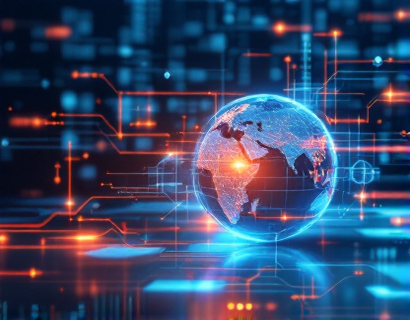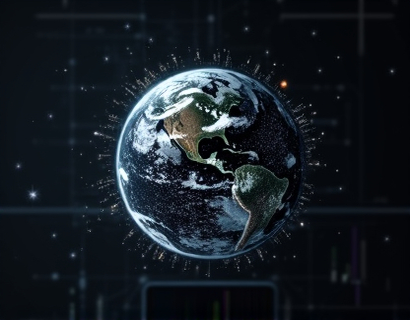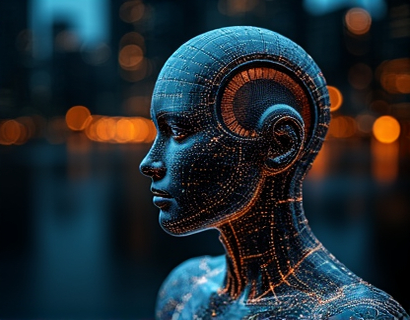Unlock Seamless Global Communication: Advanced AI-Driven Document Translation Solutions for Businesses and Individuals
In an increasingly globalized world, the ability to communicate seamlessly across linguistic and cultural boundaries is more crucial than ever. For businesses and individuals, efficient multilingual document translation is not just a convenience but a necessity. Advanced AI-driven document translation solutions have emerged as a game-changer, offering precision, cultural sensitivity, and significant time savings. These cutting-edge tools are designed to automate the conversion of text into multiple languages, streamlining workflows and enhancing international collaboration.
The traditional methods of document translation, often reliant on human translators, can be time-consuming, costly, and prone to errors. While human translators bring valuable expertise and nuance, the demand for rapid and accurate translations in various languages and contexts has outpaced the capabilities of manual translation alone. This is where advanced AI-driven translation software shines, providing a robust and efficient alternative that meets the needs of modern businesses and individuals.
Precision and Accuracy in AI-Driven Translation
One of the most significant advantages of AI-driven document translation is its precision and accuracy. These systems leverage machine learning algorithms and vast databases of linguistic data to produce translations that are not only linguistically correct but also contextually appropriate. Unlike rule-based translation systems, AI-driven solutions can adapt to the nuances of language, including idioms, colloquialisms, and domain-specific terminology.
For instance, in the legal and medical fields, where precision is paramount, AI-driven translation tools can significantly reduce the risk of miscommunication and errors. These tools are trained on specialized corpora, ensuring that the translations are accurate and relevant to the specific context. This level of accuracy is crucial for documents that have legal or medical implications, where even a small mistake can lead to significant consequences.
Cultural Sensitivity in Translation
Beyond mere linguistic accuracy, AI-driven translation solutions are designed with cultural sensitivity in mind. Effective communication across cultures requires more than just translating words; it involves understanding and respecting cultural norms, values, and practices. AI algorithms are trained to recognize and adapt to cultural differences, ensuring that translations are not only linguistically correct but also culturally appropriate.
For example, certain phrases or expressions that are common in one culture may be offensive or misunderstood in another. AI-driven translation tools can identify these potential issues and suggest alternative phrasings that are more suitable for the target audience. This cultural awareness is particularly important for businesses expanding into new markets, as it helps build trust and credibility with local customers and partners.
Time and Resource Savings
The efficiency of AI-driven translation solutions translates directly into time and resource savings for businesses and individuals. Traditional translation methods often involve lengthy processes, from sourcing human translators to reviewing and editing the final document. AI-driven tools automate much of this process, reducing the time required to produce high-quality translations.
For businesses, this means faster turnaround times for international communications, contracts, and marketing materials. It also allows companies to scale their translation needs without proportionally increasing costs or wait times. Individuals, whether travelers, students, or professionals, can quickly translate documents and conversations, breaking down language barriers and enhancing their global interactions.
Enhanced International Collaboration
In today's interconnected world, international collaboration is essential for success. AI-driven translation solutions facilitate seamless communication among team members from different linguistic backgrounds, breaking down barriers and fostering collaboration. Whether it's a multinational corporation with offices around the world or a group of researchers working on a global project, these tools ensure that everyone can contribute and understand each other effectively.
Moreover, AI-driven translation tools often include features like real-time translation and collaboration, allowing multiple users to work on the same document simultaneously. This real-time functionality is particularly valuable in dynamic environments where quick decision-making and communication are crucial.
Multilingual Document Management
For organizations dealing with a high volume of multilingual documents, efficient document management is a significant challenge. AI-driven translation solutions offer integrated document management systems that not only translate content but also organize and store it in a structured manner. This integration simplifies the process of managing translations, ensuring that all documents are easily accessible and up-to-date.
These systems can automatically tag and categorize documents based on language, subject matter, and other relevant criteria. This level of organization is invaluable for businesses and institutions that need to maintain comprehensive records in multiple languages, such as government agencies, international NGOs, and large corporations.
Scalability and Flexibility
One of the key benefits of AI-driven translation solutions is their scalability and flexibility. As businesses grow and their translation needs evolve, these tools can adapt to handle increased volumes of content without a corresponding increase in costs or complexity. This scalability makes AI-driven translation an attractive option for both small startups and large enterprises.
Additionally, these solutions are highly flexible, supporting a wide range of file formats and integration with existing workflows. Whether it's PDFs, Word documents, or web content, AI-driven translation tools can handle various types of documents, ensuring a seamless translation experience across different platforms and environments.
Quality Assurance and Continuous Improvement
While AI-driven translation solutions are highly advanced, they are not infallible. To ensure the highest quality of translations, these tools often incorporate quality assurance mechanisms. Machine learning models are continuously trained on new data, allowing them to learn from feedback and improve over time. This ongoing process of learning and refinement ensures that translations remain accurate and up-to-date.
Moreover, many AI-driven translation platforms offer human review and editing options, providing an additional layer of quality control. This hybrid approach combines the speed and efficiency of AI with the nuance and expertise of human translators, resulting in translations that meet the highest standards.
Case Studies and Real-World Applications
To better understand the impact of AI-driven translation solutions, let's look at a few real-world applications across different industries.
In the **legal sector**, a law firm used an AI-driven translation tool to translate a complex set of contracts from English to Spanish for a client in Latin America. The tool not only provided accurate translations but also ensured that the legal terminology was correctly applied, reducing the risk of misinterpretation and ensuring compliance with local laws.
In the **healthcare industry**, a hospital utilized AI-driven translation to communicate with patients who spoke different languages. By translating patient information, consent forms, and medical instructions, the hospital improved patient understanding and satisfaction, leading to better health outcomes.
For **e-commerce businesses**, AI-driven translation tools have revolutionized the way products are described and marketed in different languages. A global retailer used these tools to translate product descriptions and customer reviews, enhancing the shopping experience for international customers and increasing sales.
Future Trends and Developments
The field of AI-driven translation is rapidly evolving, with ongoing advancements in natural language processing, deep learning, and neural networks. Future developments are likely to focus on further improving the accuracy and context-awareness of translations, as well as expanding support for more languages and dialects.
One exciting area of research is the integration of multimodal translation, where AI systems can translate not only text but also speech and visual content. This could significantly enhance communication in scenarios such as international conferences, travel, and remote collaboration.
Another trend is the increasing emphasis on ethical AI, ensuring that translation tools are fair, unbiased, and respectful of cultural differences. As AI continues to play a larger role in global communication, addressing these ethical considerations will be crucial for building trust and acceptance among users.
Conclusion
AI-driven document translation solutions represent a significant leap forward in global communication, offering precision, cultural sensitivity, and efficiency. These tools are transforming the way businesses and individuals handle multilingual content, breaking down language barriers and fostering international collaboration. As the technology continues to advance, the potential for seamless global communication becomes ever more within reach, paving the way for a more connected and understanding world.










































